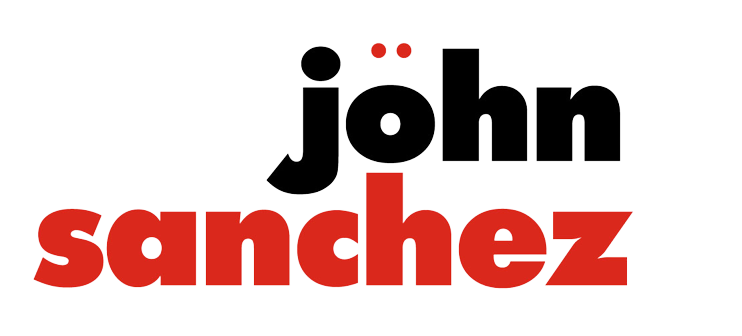Stand Firm: Understand Your Limits
Let’s begin by acknowledging one simple fact. Saying “no” is tough. As high-achievers, you program yourself to accept challenges, seize opportunities, and pursue success relentlessly. Yet, overcommitting and stretching yourself too thin can quickly become counterproductive. It can lead to stress, burnout, and, ironically, impede your performance.
In 2020, an alarming 75% of employees in the United States experienced burnout at work, a trend that has dramatically worsened over the years (Source: CNBC). High-achievers were a significant proportion of this group. Burnout clearly indicates that your well-being is compromised, underscoring the critical need to set boundaries. But why should you care about this? It’s because your ability to maintain a high level of performance in the long term hinges on your well-being. After all, a healthy mind and body make for a productive individual.
To maintain this level of productivity, start by recognizing your limits. Knowing what you can and cannot handle is the first step toward setting healthy boundaries. Now, you may wonder, how do you know your boundaries?
Reflect: Identify Your Boundaries
To figure out your limits, spend some time in reflection. Reflecting on past instances where you felt overwhelmed or stressed helps identify situations you need to avoid in the future. A study from Harvard Business School found that reflection boosts productivity by 23% over time. This exercise allows you to learn from your experiences and develop more effective strategies for managing your workload.
Start by noting situations where you felt undue stress or could not deliver your best. Looking back at these incidents can give you insights into what situations are more challenging for you. These are potential areas where you may need to establish firmer boundaries. Does identifying your boundaries mean you should start turning down opportunities left and right?
Balance: Learn When to Say No
No, setting boundaries does not mean declining every single task or opportunity. It’s about balancing your commitments and responsibilities to avoid overextending yourself. As a high-achiever, you thrive on challenges. So the key is not to eliminate them but to choose which ones you take on wisely.
A 2012 study by the University of California San Francisco found that those who have difficulty saying “no” are more likely to experience stress, burnout, and depression. Hence, your ability to say “no” can safeguard your mental health. It helps you to prioritize your tasks, commitments, and life outside work, ultimately leading to a better work-life balance. So, how do you decide when to say “no”?
Prioritize: Choose Wisely
One strategy is to align your tasks with your values, goals, and priorities. Doing so lets you more easily identify what tasks align with your core objectives and which will likely distract you from them.
For example, politely declining might be a good idea if a particular task does not contribute to your long-term goals or values. On the other hand, if a task challenges you, contributes to your personal growth, and aligns with your vision, you might want to accept it despite the extra effort it may require. But how do you convey your “no” without damaging relationships or appearing uncooperative?
Communicate: Politely Decline
How you communicate your “no” is just as important as the decision to say it. Tactfully expressing your decline can prevent misunderstandings and maintain healthy professional relationships. The key is to be assertive yet respectful.
Briefly explain why you can’t take on the task, clearly communicating your reasons. If you’re already overburdened, let the person know that you would prefer to focus on the quality of your work and fear that an additional task might compromise it. People usually understand and respect the desire for high-quality work.
Remember, saying “no” isn’t about being negative or uncooperative. It’s about maintaining your well-being and ensuring you can deliver your best in what you choose to do. So, now that you have a plan, is there a way to practice saying “no”?
Practice: Get Comfortable with Saying No
The more you practice saying “no,” the easier it becomes. Start with small things, and gradually work your way up to larger tasks or commitments. This approach can help you build confidence in your decision-making abilities and reduce the guilt often associated with saying “no.”
Consider role-playing scenarios with a friend or a mentor. This practice can provide valuable feedback and help you refine your communication skills. Furthermore, practicing mindfulness and self-compassion can also play a significant role in becoming comfortable saying “no.” But how can you sustain these boundaries in the long term?
Persevere: Maintain Your Boundaries
Maintaining boundaries is an ongoing process. You should remind yourself and others about them continually. Staying firm on your decision can be difficult, especially when faced with persuasive or persistent individuals. But remember, consistency is vital.
Consider writing down your priorities and limits, and consult them when you feel tempted to over-commit. Moreover, remember to take care of yourself. Regularly indulge in self-care activities to rejuvenate and maintain your well-being. After all, your well-being deeply intertwines with your ability to thrive in your professional life.
As we wrap up this discussion, it’s important to remember that setting boundaries by saying “no” is not a sign of weakness or incompetence. On the contrary, it shows your understanding of your limitations and commitment to maintaining a healthy work-life balance. As a high-achiever, you can define your boundaries, choose your battles, and focus on what truly matters.
The art of saying “no” is indeed a superpower that high-achievers can and should use to preserve their well-being. So, are you ready to embrace the power of “no”? Start today, and experience the difference it can make in your life!
Wrap-Up: Transform Your Path with the Power of ‘No’
Let’s revisit the very premise we started with saying “no” is tough. As we’ve journeyed through this discussion, we’ve seen how important and empowering it can be for high-achievers to master this seemingly simple word. It’s not about closing doors but choosing the doors you open thoughtfully to ensure they lead you toward personal and professional growth rather than unnecessary stress and burnout.
We spoke of recognizing your limits and setting boundaries while maintaining a balance. We stressed the importance of choosing wisely, communicating tactfully, practicing regularly, and persevering. Each action adds a shade of meaning and depth to this two-letter word – “no.” We’ve colored it in and given it texture, transforming it from a negative response to a tool for nurturing well-being.
The power of “no” is that it allows you to define your path, to create a life that balances high achievement with health and happiness. This power, once harnessed, can be the difference between burnout and sustainable success, regret and contentment.
Here is your takeaway, a thought I hope will lodge in your minds: as a high-achiever, when you say “no” to something, you’re saying “yes” to yourself. You prioritize your well-being, preserve your energy for what aligns with your values, and nurture your capacity to perform at your highest potential. So, the next time you face the prospect of overcommitting, remember the art of saying “no.” Allow this tiny word to guide your choices, protect your well-being, and, ultimately, carve your unique path to success.

